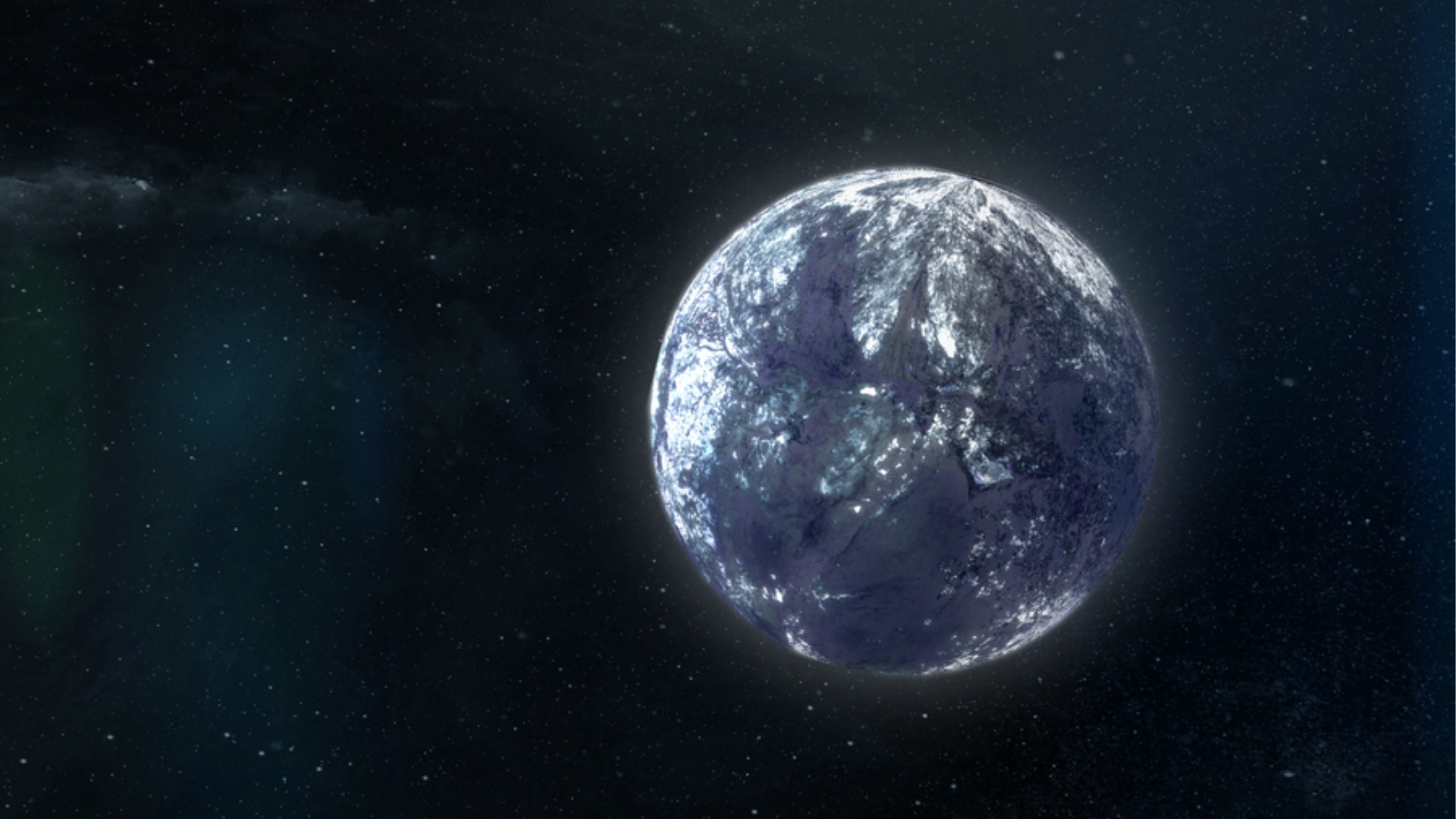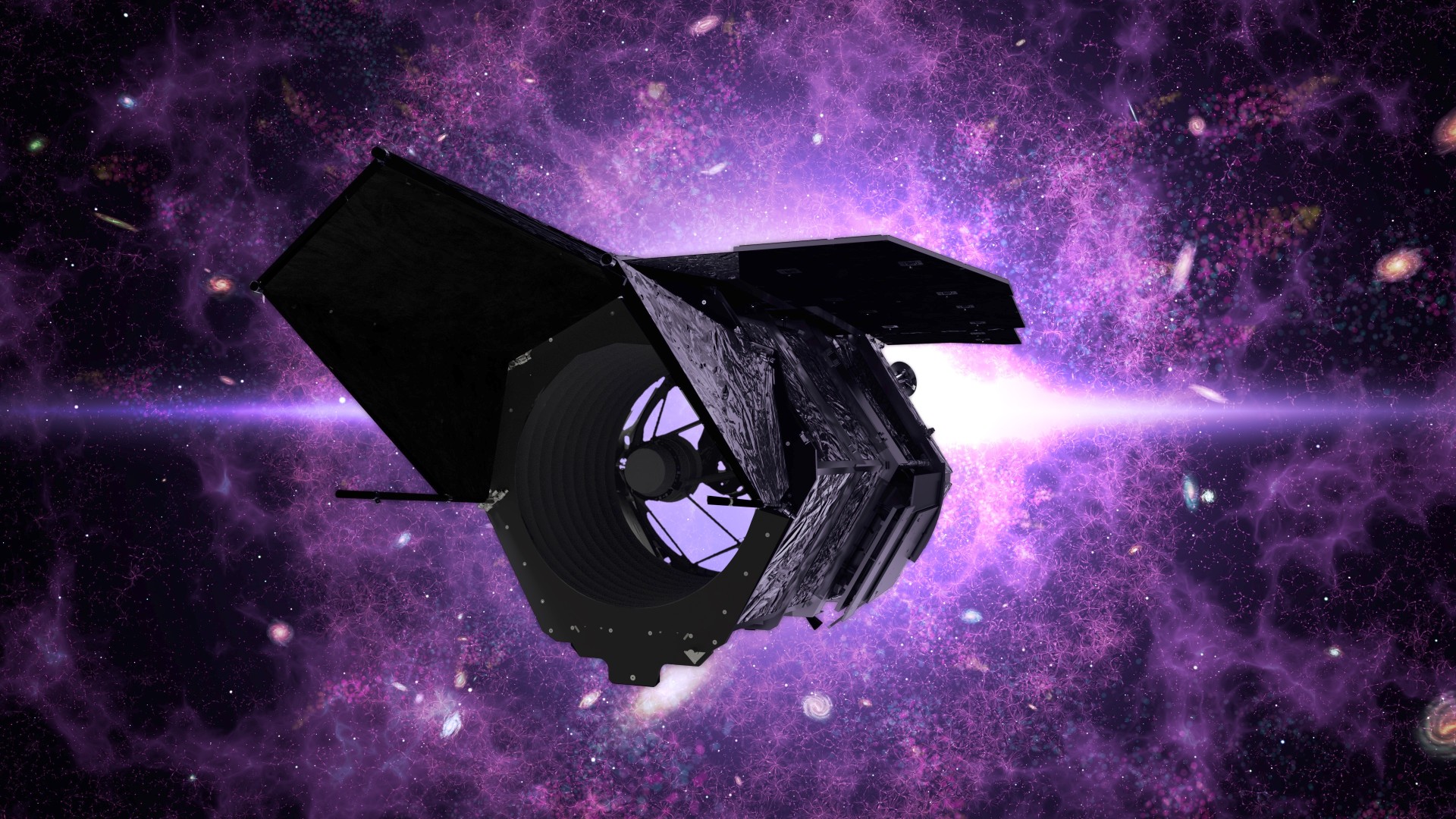400 Earth-size rogue planets could be wandering the Milky Way
NASA's forthcoming Nancy Grace Roman Telescope will hunt for "cosmic orphans," starless planets that might even outnumber their orbiting counterparts in our galaxy.

New predictions suggest an upcoming NASA space telescope could spot over 400 Earth-mass worlds hidden throughout the Milky Way that have "gone rogue" and therefore wander our galaxy alone.
Such orphan worlds are thought to start their lives in a planetary system, akin to the solar system, but get kicked at some point out by a mechanism thus far unknown. Despite the familiar picture of planets neatly orbiting a star, new research suggests such orphaned starless worlds may outnumber stars in the Milky Way by 20 to 1. This implies untethered worlds in our galaxy are around six times more common than planets orbiting parent stars.
"We estimate that our galaxy is home to 20 times more rogue planets than stars – trillions of worlds wandering alone," research author and NASA senior scientist, David Bennett, said in a statement. "This is the first measurement of the number of rogue planets in the galaxy that is sensitive to planets less massive than Earth."
Related: 1st evidence found for ‘Trojan planet’ worlds occupying same orbit
Typically, planets outside our solar system, known as exoplanets, are detected by the effects they have on their host stars. For instance, an exoplanet can cause Earth-based viewers to witness a drop in its star's light as the planet's trajectory takes it between the star and our planet. Or, an exoplanet can affect such light through a wobble it creates in the orbit of its host star while gravitationally tugging on the glowing body. But the fact that rogue planets are so far away from host stars makes them tough to spot.
One of the main goals of NASA's Nancy Grace Roman Telescope, when the space-based instrument comes online, is to spot these rogues. Previous estimates suggested that Roman, which launches in May 2027, would be capable of spotting around 50 Earth-sized rogue planets — but the new findings have upped that count. Instead, they imply a figure closer to 400. In fact, the same astronomers behind the findings have already identified an Earth-sized rogue planet candidate for Roman to investigate.
Bennett and his colleagues reached their conclusions with data collected during a nine-year astronomical survey called Microlensing Observations in Astrophysics (MOA). Conducted at the Mount John University Observatory in New Zealand, MOA looked for objects with the aid of a phenomenon first predicted by Einstein's theory of general relativity called gravitational lensing — something Roman will also use to hunt the rogues.
Get the Space.com Newsletter
Breaking space news, the latest updates on rocket launches, skywatching events and more!
Two papers describing the team's latest findings will be published in a future issue of The Astronomical Journal.
Hunting rogue worlds with the help of Einstein
Einstein's 1915 theory of general relativity predicts that objects with masses "warp" the very fabric of space. While this warping works in three dimensions (four if you factor in time), it can be thought of as analogous to the 2D effect of placing balls with different masses on a stretched rubber sheet. The larger the mass of the ball, the deeper the dent in the sheet. Likewise, the more massive the cosmic object, the stronger the warp in space.
Plus, when a very massive object warps space, that can also affect light emitted from other objects sitting in the background, causing such luminescence to bend as it passes by the original object's cosmic imprint. This can ultimately create a magnifying effect on the background object, thereby leading to the phenomenon of gravitational lensing.
Microlensing is a variation of this concept that happens when a smaller object, like a planet or star, slips between Earth and a background light source, like a star or galaxy, and comes into near-perfect alignment with the two. This causes Earth-based machines to detect a spike in the brightness of the background object, but one that's not as extreme as the effects of gravitational lensing. Still, microlensing is useful for spotting rogue planets and other small objects that don't emit light and are thus almost totally dark.
"Microlensing is the only way we can find objects like low-mass free-floating planets and even primordial black holes," research author and Osaka University professor Takahiro Sumi said. "It's very exciting to use gravity to discover objects we could never hope to see directly."
Finding an Earth-like rogue and an ejection mechanism
Since the discovery of the first exoplanet around a sun-like star in 1995, the exoplanet catalog has grown to contain over 5,000 of these intriguing objects. The majority of these planets, however, are giant worlds that orbit close to their host star.
Plus, the newly found roughly Earth-sized rogue planet represents just the second time such a world has been found using microlensing. The team behind the discovery suggests it means that rogue worlds are usually smaller planets with sizes similar to and smaller than the Earth.
"We found that Earth-size rogues are more common than more massive ones," Sumi said. "The difference in star-bound and free-floating planets' average masses holds the key to understanding planetary formation mechanisms."
The chaotic nature of planetary formation may explain how rogues come to wander the galaxy alone in the first place. Less massive planets have a weaker gravitational hold on their host stars, which means it's easier for an interaction in a forming system to fling them clear, leaving them wandering the cosmos alone.
Nancy Grace Roman joins the rogue hunt

While microlensing events are useful for spotting rogue planets, seeing these events in the vast expanse of space is still like spotting a planetary needle in a cosmic haystack. And microlensing events caused by single planets are incredibly rare.
Compounding this problem is the fact that lensing events, unlike the regular transit of a planet across the face of its star or the periodic wobble caused by an orbiting planet, are a one-time deal. When these planets cross a background star, they never return to the same region of space again.
That's where the Nancy Grace Roman Telescope comes in.
With its exceptionally wide field of view, the infrared space telescope could cast a broader net to reel in the rogues. And it will have the vision needed to see Earth-sized orphan planets.
"Roman will be sensitive to even lower-mass rogue planets since it will observe from space," research author and assistant professor at Osaka University, Naoki Koshimoto, said. "The combination of Roman's wide view and sharp vision will allow us to study the objects it finds in more detail than we can do using only ground-based telescopes, which is a thrilling prospect."
Data from Roman will be combined with observations from Japan's 1.8 meter Prime-focus Infrared Microlensing Experiment (PRIME) telescope, located at the South African Astronomical Observatory in Sutherland.
"A microlensing signal from a rogue planet can take from a few hours up to about a day, so astronomers will have a chance to do simultaneous observations with Roman and PRIME," Koshimoto said.
This combination of data should also allow astronomers to more accurately measure the masses of wandering orphan planets, thus helping them better determine what caused them to go rogue in the first place.
Join our Space Forums to keep talking space on the latest missions, night sky and more! And if you have a news tip, correction or comment, let us know at: community@space.com.

Robert Lea is a science journalist in the U.K. whose articles have been published in Physics World, New Scientist, Astronomy Magazine, All About Space, Newsweek and ZME Science. He also writes about science communication for Elsevier and the European Journal of Physics. Rob holds a bachelor of science degree in physics and astronomy from the U.K.’s Open University. Follow him on Twitter @sciencef1rst.









